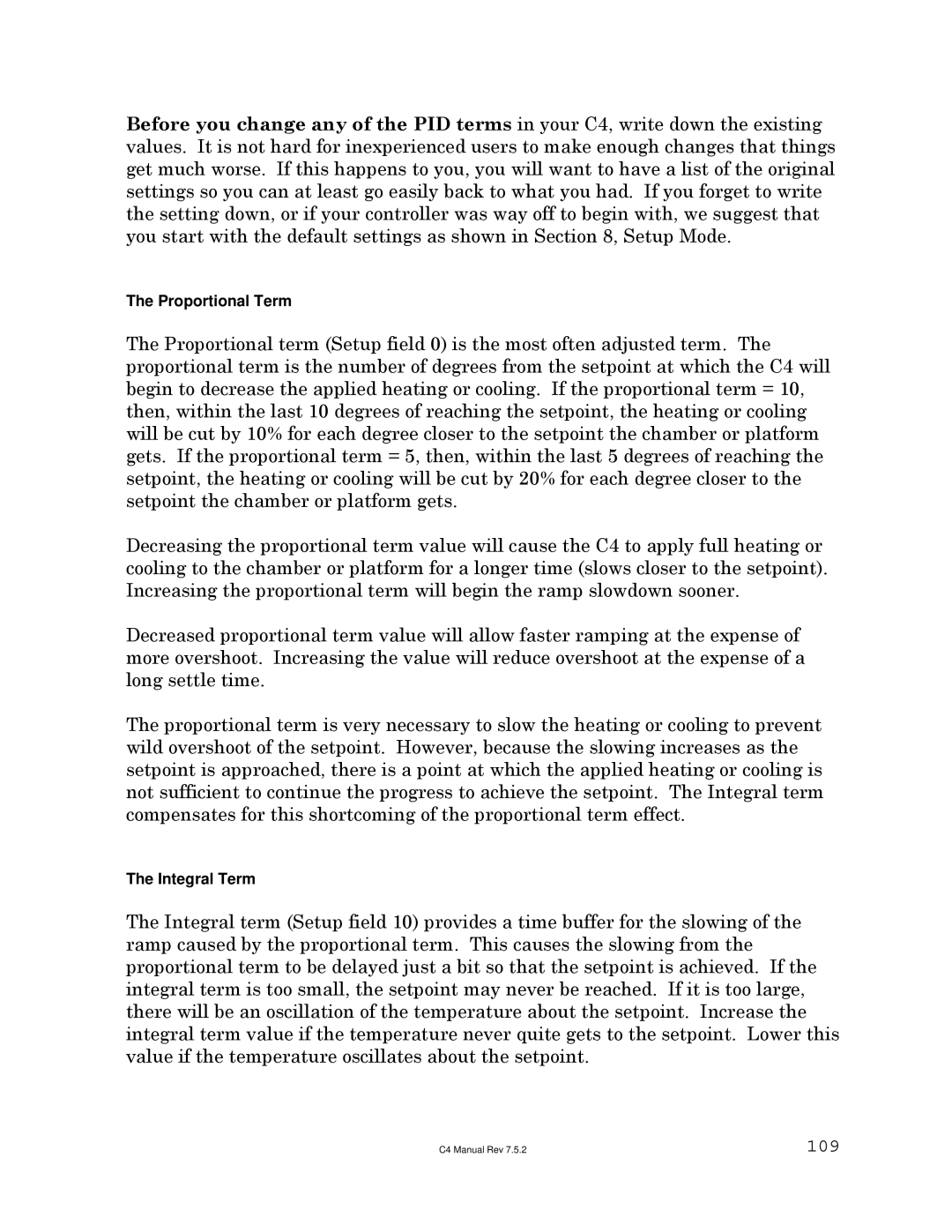Before you change any of the PID terms in your C4, write down the existing values. It is not hard for inexperienced users to make enough changes that things get much worse. If this happens to you, you will want to have a list of the original settings so you can at least go easily back to what you had. If you forget to write the setting down, or if your controller was way off to begin with, we suggest that you start with the default settings as shown in Section 8, Setup Mode.
The Proportional Term
The Proportional term (Setup field 0) is the most often adjusted term. The proportional term is the number of degrees from the setpoint at which the C4 will begin to decrease the applied heating or cooling. If the proportional term = 10, then, within the last 10 degrees of reaching the setpoint, the heating or cooling will be cut by 10% for each degree closer to the setpoint the chamber or platform gets. If the proportional term = 5, then, within the last 5 degrees of reaching the setpoint, the heating or cooling will be cut by 20% for each degree closer to the setpoint the chamber or platform gets.
Decreasing the proportional term value will cause the C4 to apply full heating or cooling to the chamber or platform for a longer time (slows closer to the setpoint). Increasing the proportional term will begin the ramp slowdown sooner.
Decreased proportional term value will allow faster ramping at the expense of more overshoot. Increasing the value will reduce overshoot at the expense of a long settle time.
The proportional term is very necessary to slow the heating or cooling to prevent wild overshoot of the setpoint. However, because the slowing increases as the setpoint is approached, there is a point at which the applied heating or cooling is not sufficient to continue the progress to achieve the setpoint. The Integral term compensates for this shortcoming of the proportional term effect.
The Integral Term
The Integral term (Setup field 10) provides a time buffer for the slowing of the ramp caused by the proportional term. This causes the slowing from the proportional term to be delayed just a bit so that the setpoint is achieved. If the integral term is too small, the setpoint may never be reached. If it is too large, there will be an oscillation of the temperature about the setpoint. Increase the integral term value if the temperature never quite gets to the setpoint. Lower this value if the temperature oscillates about the setpoint.
C4 Manual Rev 7.5.2 | 109 |
